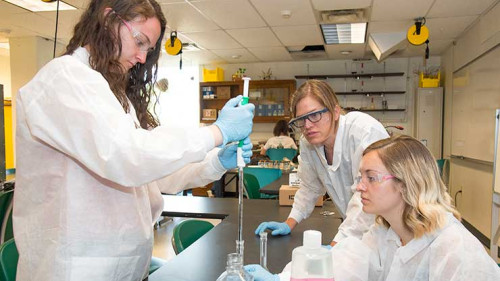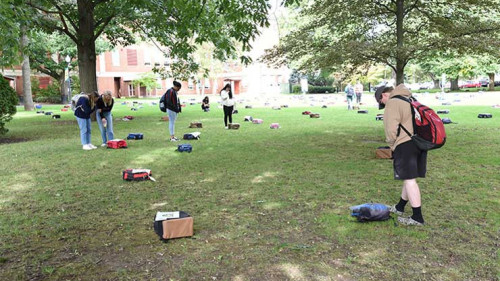
Siena College Assistant Professor of Physics John Cummings, Ph.D., physics major Kyle Turck ’12 and fellow members of the Daya Bay Reactor Neutrino Experiment, an international collaboration of physicists, have announced a finding that will pave the way for explanations of why matter exists in the universe.
Their collaborative, international research involves neutrinos, the wispy particles that flooded the universe in the earliest moments after the Big Bang. Neutrinos belong to the same family of fundamental particles as the electron, although they are neutral and much less massive, making them frustratingly difficult to detect. The challenge of capturing these elusive particles is what inspired the Daya Bay collaboration.
When neutrinos travel at close to the speed of light, the three different neutrino “flavors”—electron, muon and tau, as well as their corresponding antineutrinos—mix together and change into other flavors. The scientists were able to detect the “mixing angle” which expresses how these changes, called neutrino oscillation, occur. The measurement has been named Theta one-three.
“It’s wonderful, after the hard work of so many people for so long, to be able to make such a definitive statement,” said Cummings. “This result will make it possible to study the difference between neutrinos and anti-neutrinos, getting at the question of why the universe contains so much more matter than anti-matter.”
This is a question that has remained unanswered using the Big Bang Theory, which predicts equal amounts of matter and anti-matter should exist in the universe. The matter and anti-matter would then find each other and disappear through a process known as annihilation, leaving the universe empty. However, humanity’s very existence suggests this is not the case: our universe should be filled dominantly with matter.
“To have Siena College professors and students collaborating on a project of this magnitude is remarkable. Theta one-three is fundamental discovery that will certainly help to solve this riddle of why there is more ordinary matter than antimatter in the universe,” said Dean of the School of Science Allan Weatherwax, Ph.D.
The scientists observed tens of thousands of interactions of electron antineutrinos, caught by six massive detectors buried in the mountains adjacent to the powerful nuclear reactors of the China Guangdong Nuclear Power Group.
The researchers have submitted a paper describing their results to the journal Physical Review Letters.
The full news release is available on the Daya Bay Reactor Neutrino Experiment website.
First Photo: John Cummings, Ph.D. and Kyle Turk '12
Second Photo: Three Daya Ba



